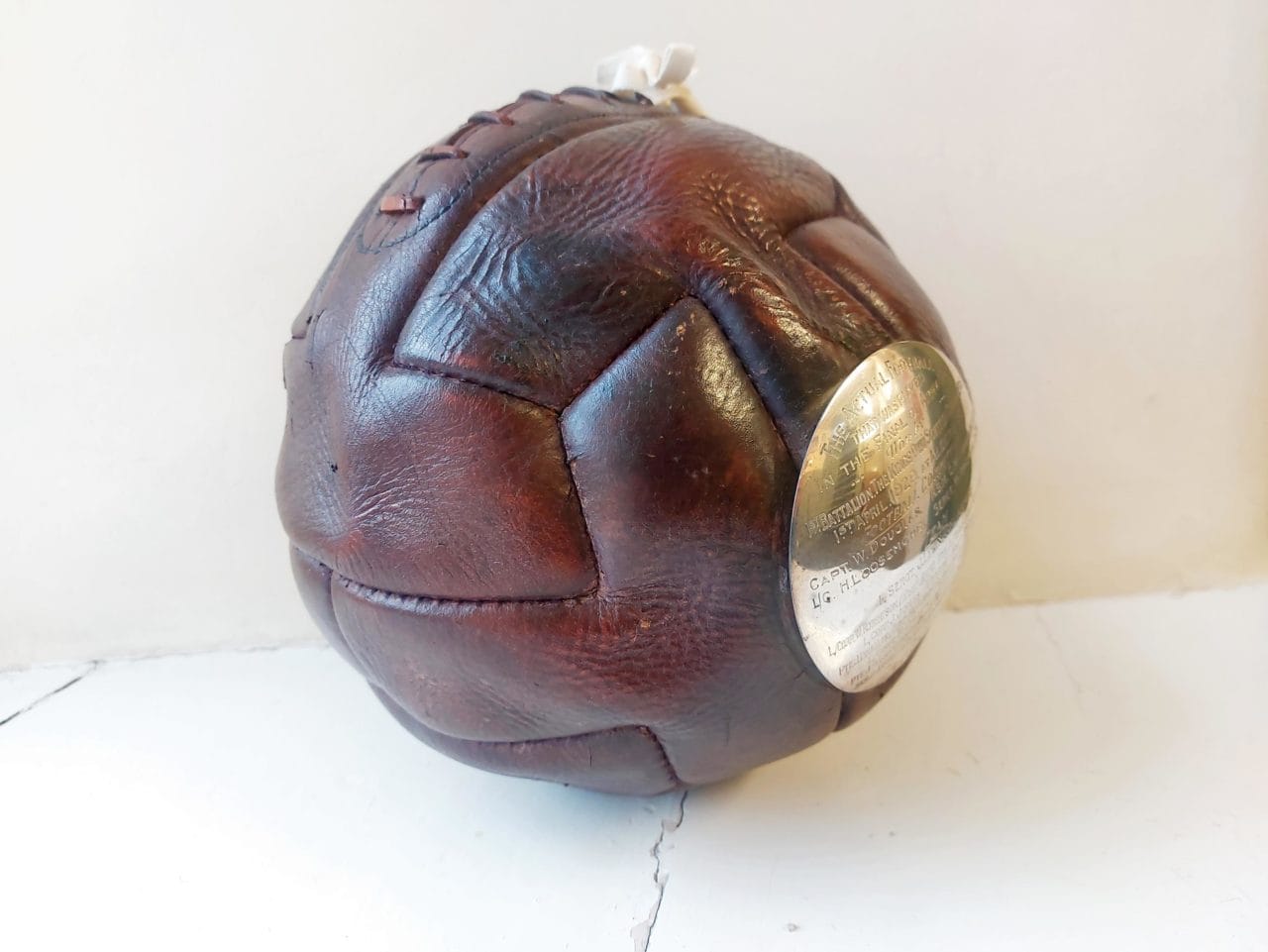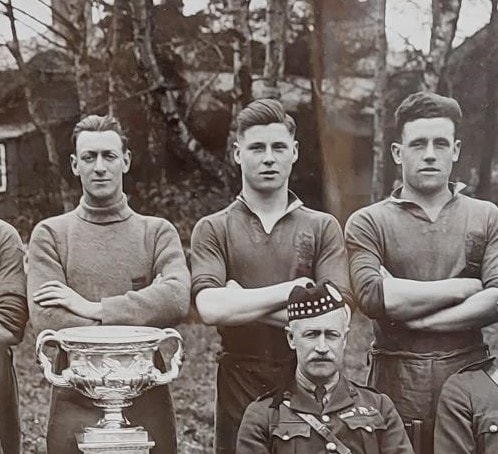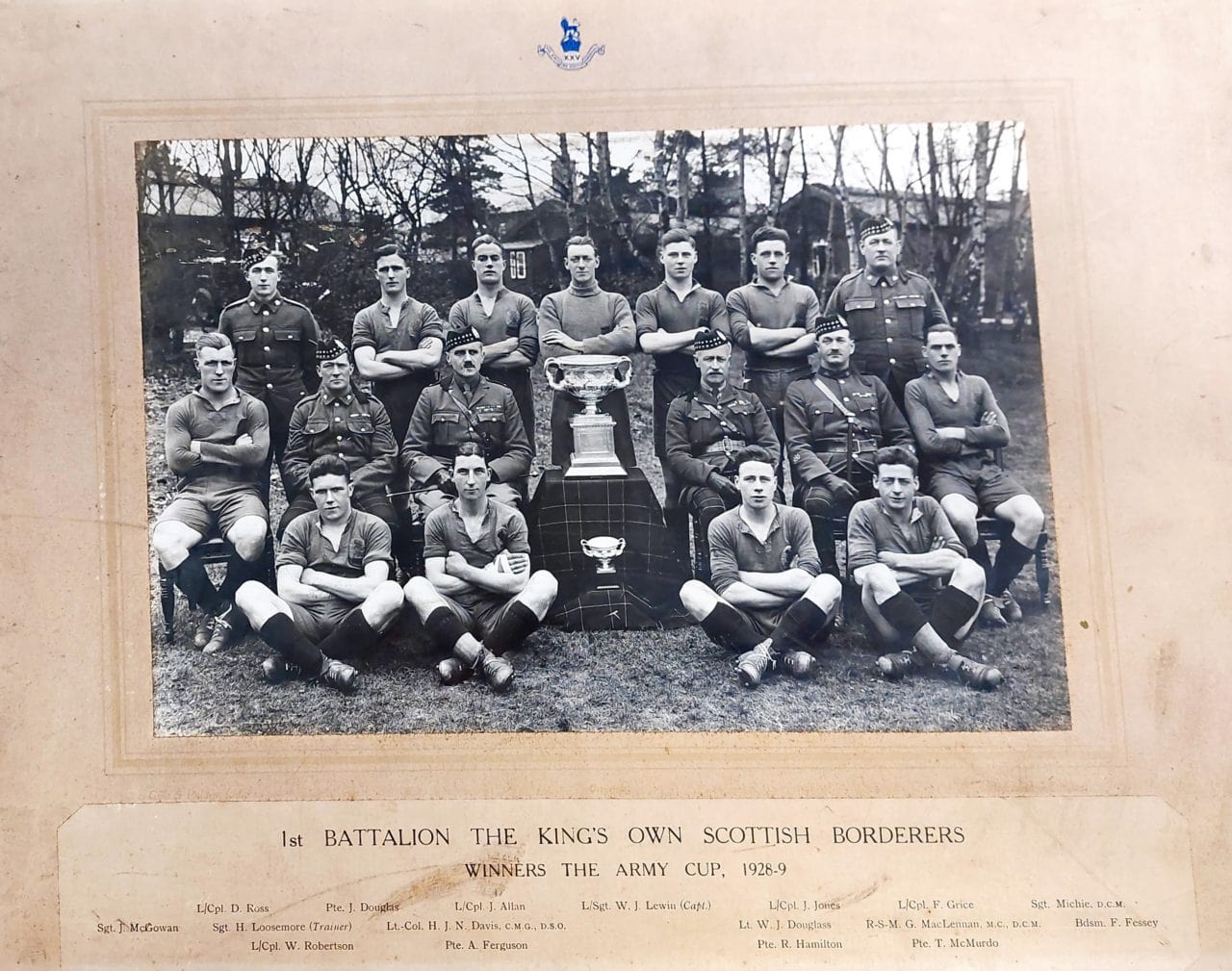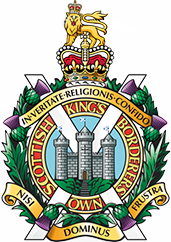Footballer Jack Jones and the 1929 Army Cup
A black and white photograph of 17 men, dated 1929. A mixture of officers in uniform and footballers in their team kit, looking serious but victorious, arms folded. They have every reason to look proud, as in the centre of the group sits the Army Cup, won by the football team of 1st Battalion, The King’s Own Scottish Borderers. The football itself is now deflated and withered but is mounted with a silver plaque bearing the names of the winning players, along with the date, time and place of the epic win, 3-2 against 1st Battalion Royal Warwickshire Regiment.

Although all sporting heroes, two players in the back row stand out: Lance Corporals Grice and Jones. Grice was an all-round sportsman, winning medals in javelin throwing and athletic events around the same time as the team won the Army Cup, and many of his medals have been on display in the Regimental Museum for a number of years. The Chronicle at the time says that ‘When he learns to feed his right wing a bit more [he] will be a very good centre. A very good shot both with his foot and head.’ Lance Corporal John Jones made a name for himself, not only in the sporting life of the Regiment, but in the world of football in general. He is described as being ‘A good half, uses his head well.’

Also known as Jack Jones and Jack ‘Soldier’ Jones, he was born on 3rd April 1907 in Lurgan, County Armagh, Northern Ireland. In March 1925, he walked into the army Recruitment office along with five friends and, together, they joined The King’s Own Scottish Borderers. He appears on the recruitment list beside his friends, with his trade listed as ‘weaver’. His father was a tenter but football seems to have been the family’s passion; his younger brother also went on to play for Ireland and his mother’s brothers had both been Irish International players. We can see from his photograph that he had the physical strength to be an effective centre-half, but he also had an innate talent to play the ball forward with vigour.

He was serving with the KOSB and playing for Linfield when he made his debut for Ireland as a centre-half. This resulted in a famous 7-0 win over Wales in the February of 1930. After serving five years with the Colours, he was discharged on 7th March 1930, with the discharge paperwork noting his ‘exemplary’ character. He joined the Royal Ulster Constabulary but left before his first year was over, football clearly being his true calling. After six years at Belfast’s Windsor Park, he gained four League titles, three Irish Cup wins, twelve Inter-League appearances, Gold Cup and County Antrim Shield success. He had played 23 full caps for Ireland between 1930 and 1937. After leaving the club, Newcastle and Arsenal wanted to buy him, but he settled on Hibernian who paid what was then an Irish League record of a whopping £4,500. He finished his professional football days with Bath City before becoming a scout for Linfield. Jack Jones died 20th March 1986 in his home town of Lurgan.
The famous Army Cup match of 1929 must have been an awe-inspiring sight, with a crowd of over 10,000 spectators. The 1st Battalion Pipes and Drums played, ‘greeted with a hurricane of cheers’ by the crowd. The weather conditions that day were not ideal, with a strong wind blowing clouds of dust around the playing field, and some superstitious spectators viewed the Pipers numbering 13 as being a bad omen. Once the game started, the KOSB team found it difficult to gain control of the ball and most of the first half seems to have been a struggle. However, after a few mistakes by the Warwicks, Grice ended up with the ball and scored the first goal. The opposing team continued to make an excellent effort, apparently making the KOSB team ‘tremble to think what they would be like playing down wind.’ After half time, the KOSB led straight in on the attack but failed to score any more goals, with the Warwicks scoring two and putting themselves in the lead. However, in the final 15 minutes of the game, the KOSB team was overcome with a surge of top-notch footballing skill and coordination: ‘instead of a series of individual efforts they played and played well as a team’. The tension was almost unbearable.
“McGowan got away, centred finely, and Grice headed the ball neatly into the net. Two all. Shortly afterwards Joyce only just saved a hard shot by McMurdo; with seven minutes to go, Ferguson took the ball up, passed to McGowan, who went through to score the winning goal, and just after, McMurdo nearly scored again. Then the whistle blew and we realised that we had really won the Army Cup by 3 goals to 2”
It was considered to be some of the best football seen in years, despite the difficult weather conditions and pressure of such an important event. It was played by a group of extremely talented sporting heroes, their names cropping up time and time again on medals in the Regimental Museum, in books about the Regiment and across our archives.

